ART OF THE STATE
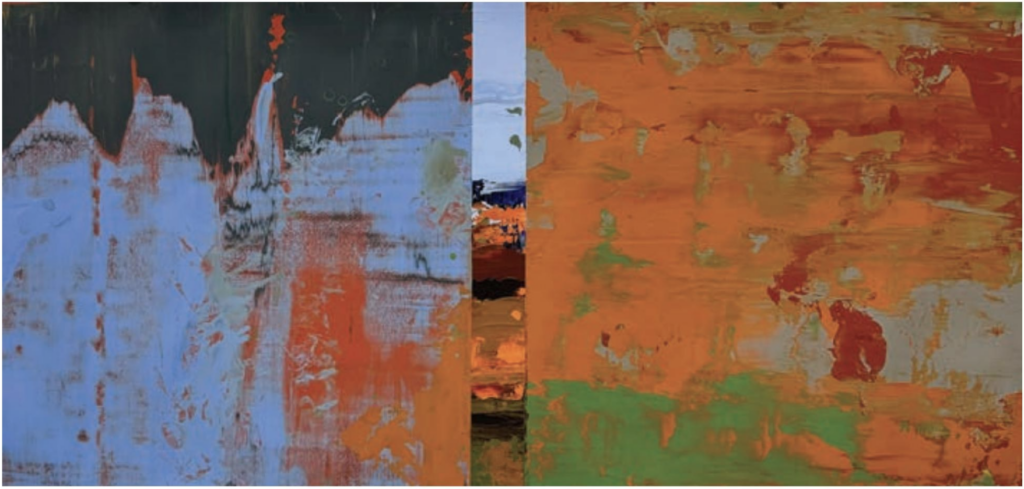
Dichotomies & Gaps
Frank Campion’s examinations in paint
By Liza Roberts
Clemmons-based artist Frank Campion brings a cerebral tenacity to his explorations of color and geometry. A series of paintings examining vertical slices of abstracted landscape evolves into another, which juxtaposes rational and random compositional styles, which then gives way to pieces addressing the spaces between those dichotomies. Gap, a recent painting, explores all of that, with the added dimension of a snippet of a view, a depiction of the ways our eyes take in the world before us.
Lately, it’s been hard work. “Sometimes artists have this conceit that everything they touch is going to turn to gold,” he says. “The truth is that it rarely does. So you have to make a lot of messes.” Gap, for instance, is “coming out of the midst of exploring where things might go.”
Campion says 2024 has been a year of just that, of “mucking about, cutting stuff up and putting it back together again. It’s a fun way to work because you can move stuff around without committing to it. It ends up looking like it’s fall in the studio: There’s leaves everywhere, and I’m just sort of blowing them around.”
He made his Dichotomies series by taping off one side of the canvas and painting the other “until it looked interesting.” Then he’d cover that painted side with newspaper and go to work on the blank one. When it was complete, he’d unveil the full canvas to himself. “There are moments when it’s really kind of interesting,” he says. “I have a vague memory of what the other side was like when I peel the tape and the newspaper off, and sometimes it’s good, and sometimes it’s not.”
Gap represents his current interest in “playing around with the idea of gaps and alleys and fissures, looking for a looser way of working. Instead of having two fields to work with, I’m seeing what happens in between them.”
To watch Campion paint is to witness intuitive creativity at work. Once, on a studio visit, he pulled a canvas to the floor and stared at it for a moment before tipping a bucket of paint onto its blank expanse. The paint was gray and viscous. It splashed indiscriminately, like muddy water. He studied it for a moment, then tipped the bucket again and again and again, finally picking up a broom-scaled squeegee to push and pull it back and forth. As starry splotches became ghostly shapes beneath a paler scrim, this respected painter looked for all the world like a pensive janitor, mopping the floor.
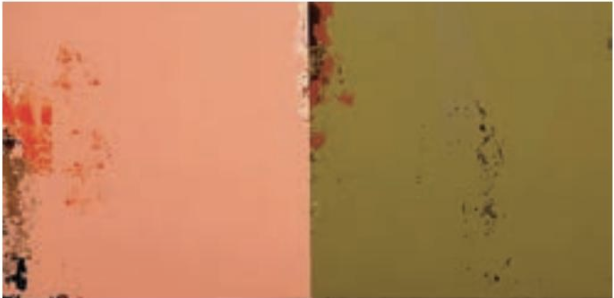
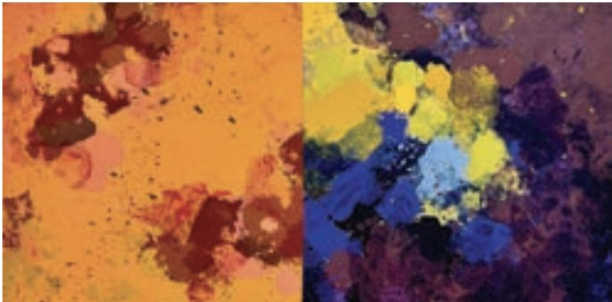
The result, weeks later, belied those humble beginnings. Sharp geometry, deep blue, soft orange and acid yellow layered the gray-splashed canvas with subtlety and contrast, dimension and structure. Pieces of gray remained, muddying some of the bright shades, swirling in tendrils on the margins.
“I like color. I like emotion,” Campion says. “I like the collision of chaos and order.” What viewers see in his work includes all of that, but most of all, he says, it’s what they bring to it themselves. “One of the things I like about abstraction is that it’s a kind of mirror. It’s a challenge.”
Campion works in a modernist showpiece of a studio he designed and attached to his house in a residential neighborhood (a contractor likened the space to the spot where Ferris Bueller’s friend Cameron’s father parked his ill-fated Ferrari). It’s a space that challenges him, delightedly so. Miles Davis plays on a continuous loop, art books fill side tables, sunlight pours through a ceiling of skylights; there’s room for giant canvases and places to sit and talk. The floor is a mosaic of speckled paint, and so is he. “He” being “Frank 2.0,” a “re-emerging artist,” as he calls himself (in writing, anyway), the present-day iteration of a Harvard-educated man who came to prominence as a young artist in Boston in the 1980s. Campion had collectors, critically successful solo shows, and was in group shows at the Institute of Contemporary Art and Boston Museum of Fine Arts (where one of his paintings is in the permanent collection). Then he became disillusioned with all of it, walked away from art completely, and immersed himself for more than 30 years in a successful advertising career.
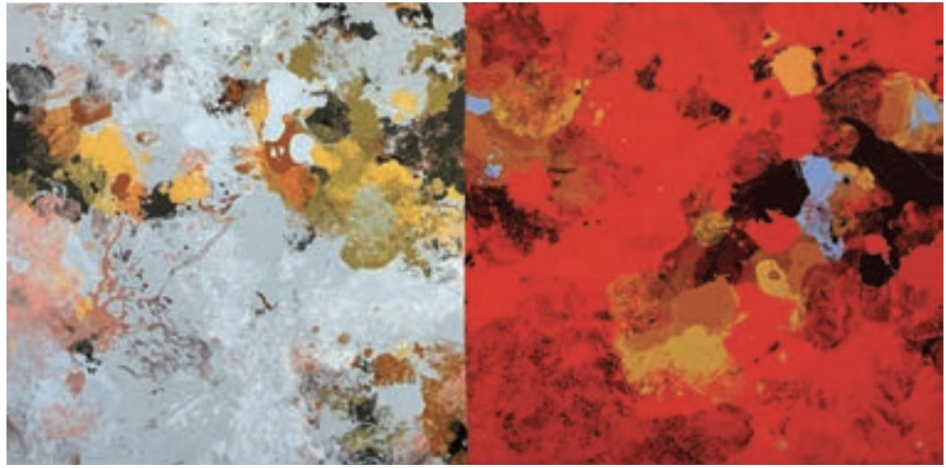
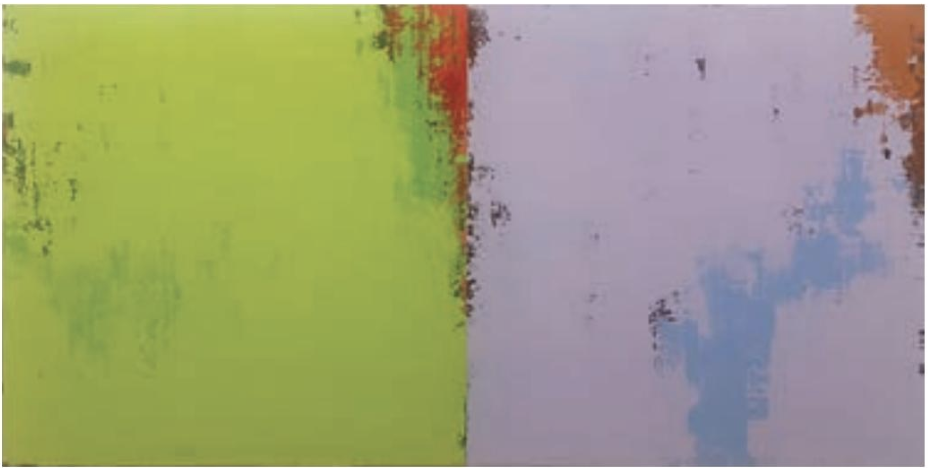
That’s what brought him to Winston-Salem, a top job at ad firm Long, Haymes & Carr, where accounts like IBM, Hanes Hosiery and Wachovia Bank and Trust Co. kept things interesting. “It was a great ride,” he says, “very creative.” After that, painting called him back.
From the beginning, color has been a main attraction. So has tension. Campion says he’s constantly intrigued by “the imposition of geometry, with its logical and rational right angles and parallel lines, pitted against a painterly catastrophe.”
His description of such a catastrophe sounds like the musings of a man in love with his work: “It’s random spills and splats, and drippy, sloppy paint. Thick paint, thin paint, rational form against random painterly incident. When I look at all the things I’ve worked on, that’s a consistent theme.” OH
This is an excerpt from Art of the State: Celebrating the Art of North Carolina, published by UNC Press.
